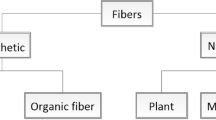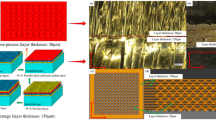Abstract
With light weight and good overall structure, thin-walled part has been widely used in various fields like aerospace. However, it has low stiffness in the cutting process. Traditional fixture clamping workpiece has a long positioning and adjustment cycle and is likely to deform, making it difficult to control machining efficiency and quality. In this study, a mechanical-magnetorheological fluid (MRF) composite flexible clamping method was proposed, and a theoretical mathematical model of the shear stress of MRF was constructed. The real value and the theoretical value of shear stress show consistent upward and downward trends. Based on the prediction model, the coupling relations between magnetic field intensity and thickness and position of workpiece were studied. Results demonstrate that workpiece thickness has less significant influence on shear stress compared with workpiece position. Combined with the experimental results, the smaller the workpiece thickness and the closer to the magnetic field, the larger the shear stress. The shear stress of the workpiece 1 mm thick is 21.5% higher than that of the workpiece with the thickness of 8 mm at position of 10 mm. Finally, the thin-walled part was used to demonstrate MRF clamping. Compared with the traditional clamping method, the proposed method can decrease the cutting force by 14.3%. Moreover, the residual stress σx and σy decrease by 37.0% and 43.9%, the flatness value decreases by 55.6%, and the roughness Ra, Rz and Rq decrease by 55.6%, 53.2%, and 56.7%. The quality of the thin-walled part was effectively controlled.
















Similar content being viewed by others
References
Zhou L, He L, Zheng YJ, Lai X, Ouyang MG, Lu LG (2020) Massive battery pack data compression and reconstruction using a frequency division model in battery management systems. J Energy Storage. https://doi.org/10.1016/j.est.2020.101252
Arnaud L, Gonzalo O, Seguy S, Jauregi H, Peigne G (2011) Simulation of low rigidity part machining applied to thin-walled structures. Int J Adv Manuf Technol 54(5-8):479–488
Zhou X, Zhang DH, Luo M, Wu BH (2009) Toolpath dependent chatter suppression in multi-axis milling of hollow fan blades with ball-end cutter. Int J Adv Manuf Technol 72(5-8):643–651
Cep R, Petru J, Zlamal T, Valicek J, Harnicarova M, Janasek A, Cepova L. (2013) Influence of feed speed on machined surface quality. International Conference On Metallurgy And Materials 1033-1038
Dong XF, Zhang WM (2017) Stability analysis in milling of the thin walled part considering multiple variables of manufacturing systems. Int J Adv Manuf Technol 89(1-4):515–527
Savadamuthu L, Muthu S, Vivekanandan P (2012) Optimization of cutting parameters for turning process using genetic algorithm. Eur J Sci Res 69(2):73–80
Hareendran M, Sreejith S (2018) A study on surface quality of thin-walled machined parts. Mater Today-Proc 5(9):18730–18738
Kant G, Sangwan KS. (2015) Predictive Modelling and optimization of machining parameters to minimize surface roughness using artificial neural network coupled with genetic algorithm. 15th Cirp Conference On Modelling of Machining Operations 31:453-458
Ding ZS, Sun GX, Guo MX, Jiang XH, Li BZ, Liang SY (2020) Effect of phase transition on micro-grinding-induced residual stress. J Mater Process Technol:281. https://doi.org/10.1016/j.jmatprotec.2020.116647
Tandon V, EI-Mounayri H, Kishawy H (2002) NC end milling optimization using evolutionary computation. Int J Mach Tool Manu 42(5):595–605
Hauth S, Richterich C, Glasmacher L, Linsen L (2011) Constant cusp tool path generation in configuration space based on offset curves. Int J Adv Manuf Technol 53(1):325–338
Rao RV, Pawar PJ (2010) Parameter optimization of a multi-pass milling process using non-traditional optimization algorithms. Appl Soft Comput 10(2):445–456
Jiang XH, Li BZ, Yang JG, Wu HL (2011) Research on the properties of milling and the process parameters optimization for aluminum-alloy thin-walled parts. Front Manuf Design Sci 44-47:2842–2846
Jiang XH, Li BZ, Yang JG, Zuo XY (2013) Effects of tool diameters on the residual stress and distortion induced by milling of thin-walled part. Int J Adv Manuf Technol 68(1-4):175–186
Jiang XH, Kong XJ, Zhang ZY, Wu ZP, Ding ZS, Guo MX (2020) Modeling the effects of Undeformed Chip Volume (UCV) on residual stresses during the milling of curved thin-walled parts. International Journal of Mechanical Sciences 167. https://doi.org/10.1016/j.ijmecsci.2019.105162
Wu CJ, Pang JZ, Li BZ, Liang SY (2019) High-speed grinding of HIP-SiC ceramics on transformation of microscopic features. Int J Adv Manuf Technol 102:1913–1921
Xiong CH, Wang MY, Xiong YL (2008) On clamping planning in workpiece–fixture systems. IEEE Transact Auto Sci Eng 5(3):407–419
Deng HY, Melkote SN (2006) Determination of minimum clamping forces for dynamically stable fixturing. Int J Mach Tool Manu 46(7-8):847–857
Kaya N (2006) Machining fixture locating and clamping position optimization using genetic algorithms. Comput Ind 57(2):112–120
Asante JN (2008) A combined contact elasticity and finite element-based model for contact load and pressure distribution calculation in a frictional workpiece-fixture system. Int J Adv Manuf Technol 39(5-6):578–588
Ratchev S, Phuah K, Liu S (2007) FEA-based methodology for the prediction of part-fixture behaviour and its applications. J Mater Process Technol 191(1-3):260–264
Siebenaler SP, Melkote SN (2006) Prediction of workpiece deformation in a fixture system using the finite element method. Int J Mach Tool Manu 46(1):51–58
Qin GH, Zhang WH, Wan M (2006) Analysis and optimal design of fixture clamping sequence. J Manuf Sci Eng-Transact ASME 128(2):482–493
Liu SG, Zheng L, Zhang ZH, Li ZZ, Liu DC (2007) Optimization of the number and positions of fixture locators in the peripheral milling of a low-rigidity workpiece. Int J Adv Manuf Technol 33(7-8):668–676
Raghu A, Melkote SN (2005) Modeling of workpiece location error due to fixture geometric error and fixture-workpiece compliance. J Manuf Sci Eng-Transact ASME 127(1):75–83
Meshreki M, Attia H, Kovecses J (2011) Development of a new model for the varying dynamics of flexible pocket-structures during machining. J Manuf Sci Eng-Transact ASME 133(4). https://doi.org/10.1115/1.4004322
Meshreki M, Attia H, Kovecses J (2011) A new analytical formulation for the dynamics of multipocket thin-walled structures considering the fixture constraints. J Manuf Sci Eng-Transact ASME 133(2). https://doi.org/10.1115/1.4003520
Meshreki M, Kovecses J, Attia H, Tounsi N (2008) Dynamics modeling and analysis of thin-walled aerospace structures for fixture design in multiaxis milling. J Manuf Sci Eng-Transact ASME 130(3). https://doi.org/10.1115/1.2927444
Wan XJ, Xiong CH, Wang XF, Zhang XM, Xiong YL (2010) A machining-feature-driven approach to locating scheme in multi-axis milling. Int J Mach Tool Manu 50(1):42–50
Zhang XZ, Gong XL, Zhang PQ, Wang QM (2004) Study on the mechanism of the squeeze-strengthen effect in magnetorheological fluids. J Appl Phys 96(4):2359–2364
Choi SB, Hong SR, Sung KG, Sohn JW (2008) Optimal control of structural vibrations using a mixed-mode magnetorheological fluid mount. Int J Mech Sci 50(3):559–568
Pour DS, Behbahani S (2016) Semi-active fuzzy control of machine tool chatter vibration using smart MR dampers. Int J Adv Manuf Technol 83(1–4):421–428
Zhu YS, Gong XL, Li H, Zhang PQ (2006) Numerical analysis on shear yield stress of magnetorheological fluids. J China Univ Min Technol 35(4):0498
Funding
This project is supported by the Innovation Funding of Shanghai Aerospace Science and Technology (Grant No. SAST2019-065) and the Shanghai Science and Technology Commission (Grant No. 19060502300).
Author information
Authors and Affiliations
Corresponding author
Additional information
Publisher’s note
Springer Nature remains neutral with regard to jurisdictional claims in published maps and institutional affiliations.
Rights and permissions
About this article
Cite this article
Xiaohui, J., Yong, Z., Weiwei, L. et al. Characteristics of shear stress based on magnetorheological fluid flexible fixture during milling of the thin-walled part. Int J Adv Manuf Technol 108, 2607–2619 (2020). https://doi.org/10.1007/s00170-020-05439-y
Received:
Accepted:
Published:
Issue Date:
DOI: https://doi.org/10.1007/s00170-020-05439-y




